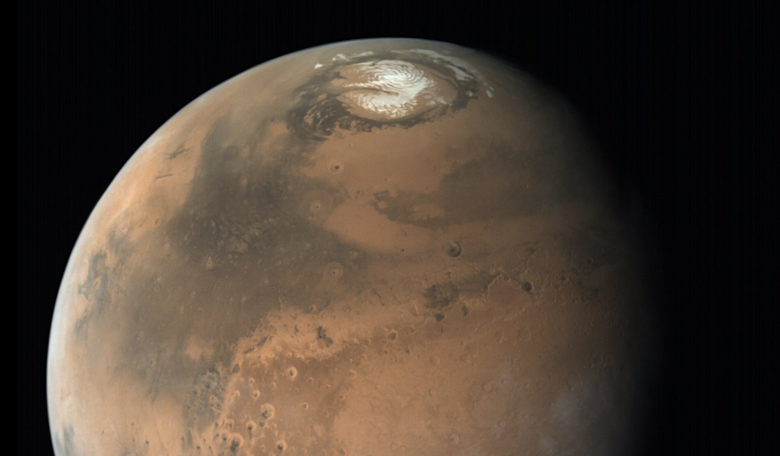Last year a new study revealed that Venus may be hiding oceans worth of water in its crust - a finding that challenged the long-held theory that our neighbouring “twin” planet lost its water to space. Now, researchers concentrating on our other celestial neighbour – Mars – say the same thing likely happened there too.
Numerous studies on Mars have shown that billions of years ago, the Red Planet looked very different to the dry and dusty windswept plains seen today.
From potential mega-tsunamis sweeping across the surface to signs of river deltas and relic shorelines, Mars it seems, could have once rivalled Earth for the title of Blue Planet.
Evidence that water was once pervasive on Mars can still be seen in the form of large pools of water hidden under its cold and arid crust, and frozen as ice at the planet’s poles, but was the rest really lost to space because of Mars's low gravity?
According to new research from Caltech and JPL scientists, the answer is no.
To understand where Mars’ water might has gone, scientists study how much deuterium and hydrogen is left in the planet’s atmosphere - its D/H ratio.
Hydrogen is a chief component of water and it has two stable isotopes; protium and deuterium. Protium atoms account for the vast majority of hydrogen atoms and they consist of just one proton within the atomic nucleus, plus an electron.
However, a tiny fraction of hydrogen (about 0.02 percent) exist as deuterium atoms, which have a proton, electron and a neutron in the nucleus. This added particle gives deuterium its name as "heavy" hydrogen.
Because it is lighter, protium can escape the planet's gravity into space more easily and so it leaves behind an outsized portion of its heavier counterpart, deuterium, in the atmosphere.
After simulating volcanic degassing, atmospheric escape, and crustal hydration on Mars, a team headed by Caltech PhD candidate Eva Scheller, say that the loss of water solely through the atmosphere cannot explain both the observed deuterium to hydrogen signal in the Martian atmosphere and large amounts of water in the past.
Instead the team suggest that a significant portion of Mars's water — between 30 and 99 percent — is trapped within minerals in the planet's crust.
"Atmospheric escape clearly had a role in water loss, but findings from the last decade of Mars missions have pointed to the fact that there was this huge reservoir of ancient hydrated minerals whose formation certainly decreased water availability over time," says co-author Bethany Ehlmann, professor of planetary science and associate director for the Keck Institute for Space Studies.
This vast retention of ancient water, which could equate to as much as several oceans' worth of H2O, decreased over the Noachian period (~3.7 to 4.1 billion years ago), reaching present-day values by around three billion years ago.
Crustal hydration is not unique to Mars. It has been theorised to occur on Venus and it also occurs on Earth.
The difference is that our planet has plate tectonics and this allows the recycling of crustal water that is eventually outgassed to the atmosphere through volcanism.
Without plate tectonics, water on our neighbouring planets is trapped in the crust with no means to be freed.
"All of this water was sequestered fairly early on, and then never cycled back out," Scheller says. The research, which relied on data from telescopes, meteorites, satellite observations, and samples analysed by rovers on Mars, illustrates the importance of having multiple ways of probing the Red Planet, she says.
“We conclude that the increasing aridity of Mars over its history was caused by the sink of chemical weathering of the crust,” write the team in their paper published by the journal Science on 16 March and presented the same day at the Lunar and Planetary Science Conference (LPSC).
“Irreversible chemical weathering therefore plays a role in regulating the habitability of terrestrial planets, by controlling the timescales of sustained participation of water in the hydrologic cycle,” they add.











